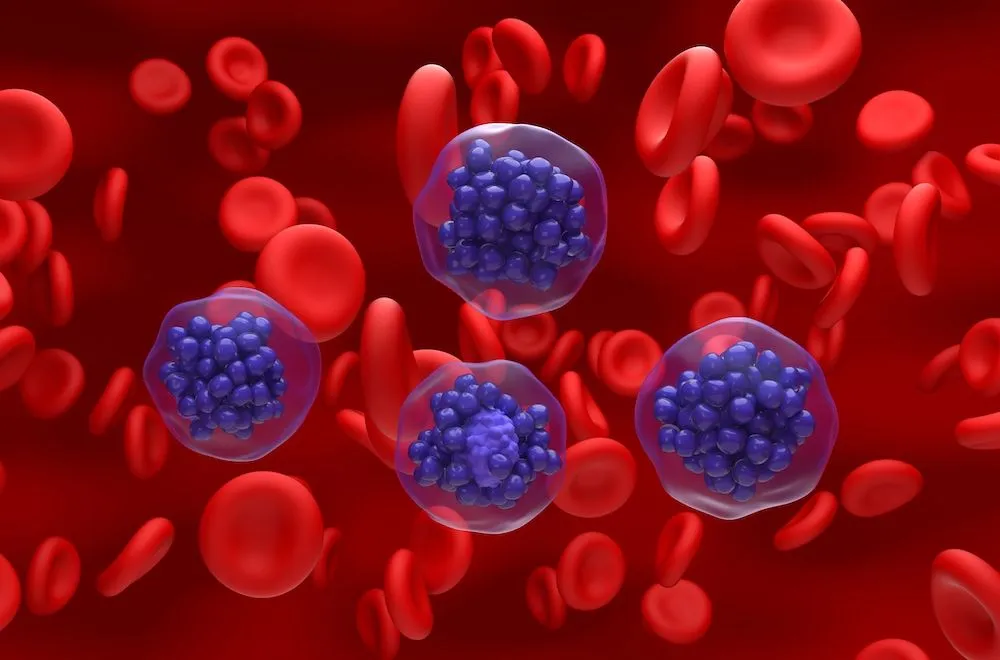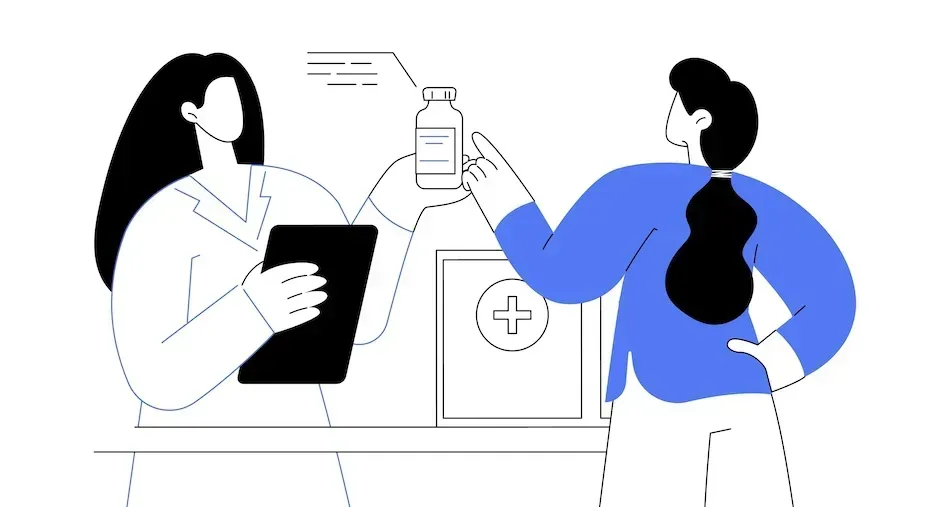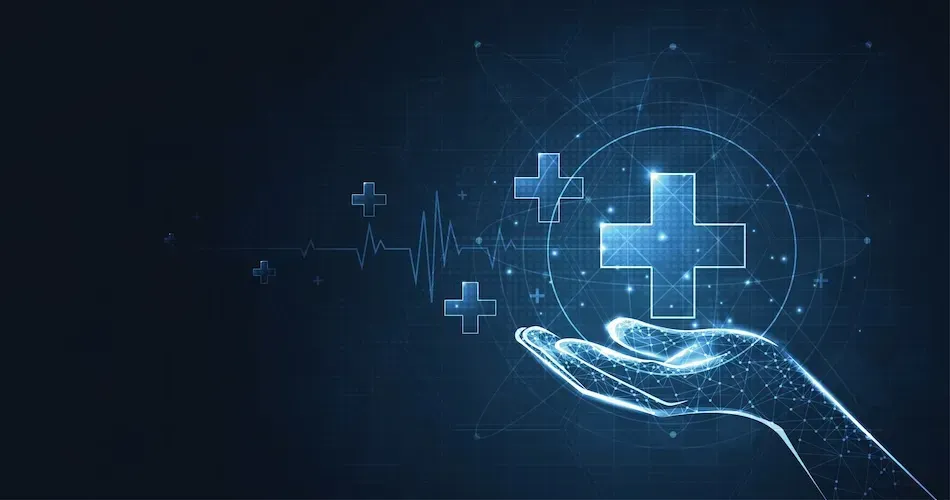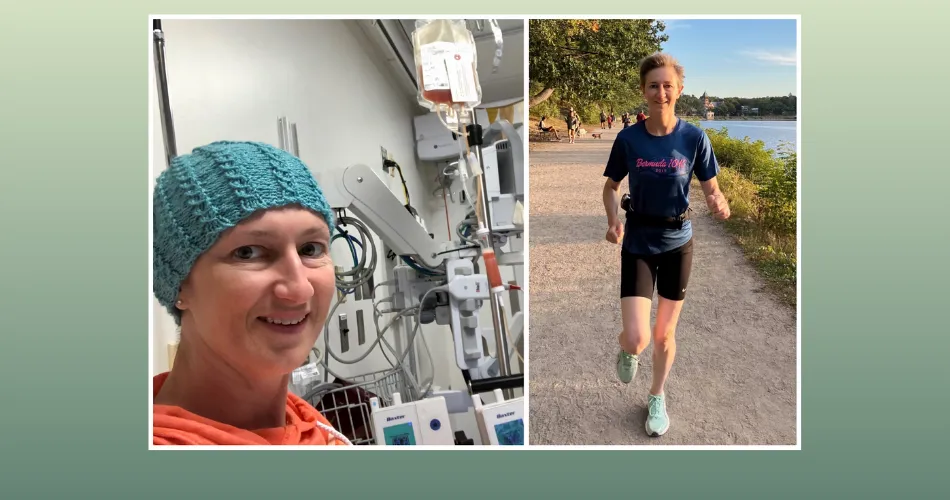Richter Transformation: Symptoms, Tests, & Treatments

Up to 10% of people with chronic lymphocytic leukemia (CLL)/ small lymphocytic lymphoma (SLL) develop Richter transformation (RT) during the cancer course.
In Richter transformation, CLL/SLL cells morph into a more aggressive form of lymphoma, often diffuse large B-cell lymphoma (DLBCL). CLL/SLL cells can undergo this transformation before or after treatment.
Richter transformation is named after Maurice Richter, the American pathologist who first described it in 1928 after seeing a CLL patient who suddenly showed a swelling of the lymph nodes.
Learn about the symptoms and treatment options for people who have experienced Richter transformation.
What Causes Richter Transformation?
The cause of CLL undergoing Richter transformation is not yet well understood. Possible links have been tied to reactivation of the Epstein-Barr virus. It is one of the most common human viruses, it can cause diseases like mononucleosis, and after the infection, it stays hidden (inactive or latent) in your body and can reactivate later in life.
Another study found links between Richter transformation and the deletion of the MGA gene, suggesting therapies be used to target that gene. Click here to learn more.
What are the Signs/Symptoms of Richter Transformation?
Signs and symptoms to look for that may indicate Richter transformation include:
-
Fast-growing lymph nodes
-
Drenching night sweats
-
New fevers
-
A persistent high level of lactate dehydrogenase (LDH)
-
Reactivated Epstein-Barr virus
-
Unintentional weight loss
What Tests are Needed to Confirm Richter Transformation?
The common tests you’ll need to undergo to confirm Richter transformation include:
-
A blood test to measure the levels of lactate dehydrogenase (LDH)
-
A blood test to detect to detect if you have any Epstein-Barr virus antigens or antibodies
-
A PET/CT scan to find enlarged lymph nodes, followed by a lymph node biopsy to examine the cells
What are the Treatments for Richter Transformation?
There is not yet a standard therapy for Richter transformation (RT). Because CLL often transforms into DLBCL during RT, lymphoma treatments have been used in the past.
Specialists have found that chemotherapy regimens like R-CHOP are not effective long-term for these patients as they rarely achieve a complete remission and for those that do, the remission period lasts an average of 10 months.
Other options like stem cell transplant, however, have shown improved outcomes for RT patients.
Stem Cell Transplant for Richter Transformation
A study demonstrated the following for how well two forms of stem cell transplants (SCT) worked for 170 RT patients who had previously been treated with CLL therapies and had high-risk features:
-
Autologous-SCT (the patient's own stem cells were collected and then re-infused)
-
At the check-in point of 3 years after treatment, 57% of RT patients were still alive
-
-
Allogeneic-SCT (donor stem cells are infused into the patient)
-
-
At the check-in point of 3 years after treatment, 52% of RT patients were still alive
-
Autologous-SCT may be preferred to allogeneic-SCT for patients with Richter transformation due to its slight effectiveness advantage and because it avoids graft-vs-host disease, a serious complication where donor stem cells attack the recipient's body.
CAR T-cell Therapy for Richter Transformation
CAR T-cell therapy liso-cel (Breyanzi, BMS) was evaluated to treat Richter transformation. CAR T-cell therapy enhances a patient’s T-cells to more effectively kill cancer cells.
Because liso-cel is still very new, there is limited experience in treating patients with RT with CAR T-cells. This study found that after 12 months from treatment with liso-cel:
-
54% of 30 patients were still in remission
-
67% of 30 patients were still alive
Bispecific Antibodies for Richter Transformation
Bispecific antibodies are also being investigated for RT. They work by attaching to T-cells and cancer cells, bringing the T-cell close enough to kill the cancer cell.
Early data from a study evaluating the bispecific antibody epcoritamab (Epkinly, Genmab/AbbVie) for RT patients showed after treatment, 50% of patients achieved a complete reduction of cancer signs/symptoms. More time is needed to evaluate how effective bispecific antibodies may be in the long run for Richter transformation.
Additional resources:
For additional insights click here to learn about how receiving or not receiving CLL targeted therapies prior to Richter transformation can influence which treatment you should choose next.
Conclusion
In summary, although Richter transformation does not yet have a standard treatment, chemotherapy regimens are not recommended. Several therapies are being investigated, such as stem cell transplant, CAR T-cell therapy, and bispecific antibodies. We need more information over a longer time to understand how well these treatments work.
Accelerate the discovery of new treatment options by creating an account at HealthTree Cure Hub, an innovative tool that powers life-saving research!
If you are interested in finding a clinical trial, locating a specialist, or staying on top of your health by having all your labs in one place, you can create a free HealthTree Cure Hub account by clicking the button below!
Sources:
Up to 10% of people with chronic lymphocytic leukemia (CLL)/ small lymphocytic lymphoma (SLL) develop Richter transformation (RT) during the cancer course.
In Richter transformation, CLL/SLL cells morph into a more aggressive form of lymphoma, often diffuse large B-cell lymphoma (DLBCL). CLL/SLL cells can undergo this transformation before or after treatment.
Richter transformation is named after Maurice Richter, the American pathologist who first described it in 1928 after seeing a CLL patient who suddenly showed a swelling of the lymph nodes.
Learn about the symptoms and treatment options for people who have experienced Richter transformation.
What Causes Richter Transformation?
The cause of CLL undergoing Richter transformation is not yet well understood. Possible links have been tied to reactivation of the Epstein-Barr virus. It is one of the most common human viruses, it can cause diseases like mononucleosis, and after the infection, it stays hidden (inactive or latent) in your body and can reactivate later in life.
Another study found links between Richter transformation and the deletion of the MGA gene, suggesting therapies be used to target that gene. Click here to learn more.
What are the Signs/Symptoms of Richter Transformation?
Signs and symptoms to look for that may indicate Richter transformation include:
-
Fast-growing lymph nodes
-
Drenching night sweats
-
New fevers
-
A persistent high level of lactate dehydrogenase (LDH)
-
Reactivated Epstein-Barr virus
-
Unintentional weight loss
What Tests are Needed to Confirm Richter Transformation?
The common tests you’ll need to undergo to confirm Richter transformation include:
-
A blood test to measure the levels of lactate dehydrogenase (LDH)
-
A blood test to detect to detect if you have any Epstein-Barr virus antigens or antibodies
-
A PET/CT scan to find enlarged lymph nodes, followed by a lymph node biopsy to examine the cells
What are the Treatments for Richter Transformation?
There is not yet a standard therapy for Richter transformation (RT). Because CLL often transforms into DLBCL during RT, lymphoma treatments have been used in the past.
Specialists have found that chemotherapy regimens like R-CHOP are not effective long-term for these patients as they rarely achieve a complete remission and for those that do, the remission period lasts an average of 10 months.
Other options like stem cell transplant, however, have shown improved outcomes for RT patients.
Stem Cell Transplant for Richter Transformation
A study demonstrated the following for how well two forms of stem cell transplants (SCT) worked for 170 RT patients who had previously been treated with CLL therapies and had high-risk features:
-
Autologous-SCT (the patient's own stem cells were collected and then re-infused)
-
At the check-in point of 3 years after treatment, 57% of RT patients were still alive
-
-
Allogeneic-SCT (donor stem cells are infused into the patient)
-
-
At the check-in point of 3 years after treatment, 52% of RT patients were still alive
-
Autologous-SCT may be preferred to allogeneic-SCT for patients with Richter transformation due to its slight effectiveness advantage and because it avoids graft-vs-host disease, a serious complication where donor stem cells attack the recipient's body.
CAR T-cell Therapy for Richter Transformation
CAR T-cell therapy liso-cel (Breyanzi, BMS) was evaluated to treat Richter transformation. CAR T-cell therapy enhances a patient’s T-cells to more effectively kill cancer cells.
Because liso-cel is still very new, there is limited experience in treating patients with RT with CAR T-cells. This study found that after 12 months from treatment with liso-cel:
-
54% of 30 patients were still in remission
-
67% of 30 patients were still alive
Bispecific Antibodies for Richter Transformation
Bispecific antibodies are also being investigated for RT. They work by attaching to T-cells and cancer cells, bringing the T-cell close enough to kill the cancer cell.
Early data from a study evaluating the bispecific antibody epcoritamab (Epkinly, Genmab/AbbVie) for RT patients showed after treatment, 50% of patients achieved a complete reduction of cancer signs/symptoms. More time is needed to evaluate how effective bispecific antibodies may be in the long run for Richter transformation.
Additional resources:
For additional insights click here to learn about how receiving or not receiving CLL targeted therapies prior to Richter transformation can influence which treatment you should choose next.
Conclusion
In summary, although Richter transformation does not yet have a standard treatment, chemotherapy regimens are not recommended. Several therapies are being investigated, such as stem cell transplant, CAR T-cell therapy, and bispecific antibodies. We need more information over a longer time to understand how well these treatments work.
Accelerate the discovery of new treatment options by creating an account at HealthTree Cure Hub, an innovative tool that powers life-saving research!
If you are interested in finding a clinical trial, locating a specialist, or staying on top of your health by having all your labs in one place, you can create a free HealthTree Cure Hub account by clicking the button below!
Sources:

about the author
Megan Heaps
Megan joined HealthTree in 2022. She enjoys helping patients and their care partners understand the various aspects of the cancer. This understanding enables them to better advocate for themselves and improve their treatment outcomes.
More on Core Education
Trending Articles
Get the Latest Leukemia Updates, Delivered to You.
By subscribing to the HealthTree newsletter, you'll receive the latest research, treatment updates, and expert insights to help you navigate your health.
Together we care.
Together we cure.
3x Faster.








